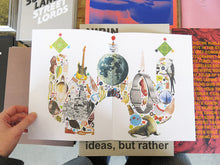
Edie Fake’s paintings start as self-portraits, and from there, they make a break for it, referencing elements of the trans and non-binary body through pattern, colour and architectural metaphor. Edie’s precise, intimately scaled, gouache-and-ink paintings on panel are structured around the physical aspects of transition and adaptation as well as mental and sexual health.
Since moving from first Chicago, then to Los Angeles while briefly attending grad school at USC, to now the high desert of Joshua Tree in California, Edie’s work has evolved from the acclaimed Memory Palaces series – reimagined facades of urban lesbian bars and gay nightclubs – to a new feeling of vulnerability due to shifts in the U.S. social and political climate. The work blurs lines between architecture and body with structures adorned by elements that seem to be both decorative and protective. Architectural components are used as visual metaphors for the ways in which definition and validation elude trans identities. Says Fake, 'More and more I’m trying to bring an anarchy into that architecture, or a fantasy and ecstasy of what queer space is and can be.'
12 pages, 19.5 x 25.5 cm, softcover, Nieves (Zurich).
Since moving from first Chicago, then to Los Angeles while briefly attending grad school at USC, to now the high desert of Joshua Tree in California, Edie’s work has evolved from the acclaimed Memory Palaces series – reimagined facades of urban lesbian bars and gay nightclubs – to a new feeling of vulnerability due to shifts in the U.S. social and political climate. The work blurs lines between architecture and body with structures adorned by elements that seem to be both decorative and protective. Architectural components are used as visual metaphors for the ways in which definition and validation elude trans identities. Says Fake, 'More and more I’m trying to bring an anarchy into that architecture, or a fantasy and ecstasy of what queer space is and can be.'
12 pages, 19.5 x 25.5 cm, softcover, Nieves (Zurich).






